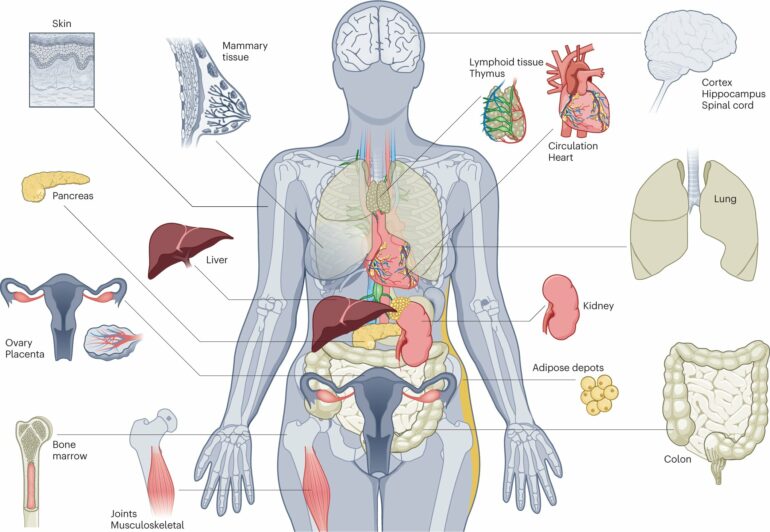Multiple researchers at the Jackson Laboratory (JAX) are taking part in an ambitious research program spanning several top research institutions to study senescent cells. Senescent cells stop dividing in response to stressors and seemingly have a role to play in human health and the aging process. Recent research with mice suggests that clearing senescent cells delays the onset of age-related dysfunction and disease as well as all-cause mortality.
Could therapies that remove senescent cells—called senotherapeutics—also improve the health of humans as we age? Answering this question and more has the potential to significantly advance human health, and the National Institutes of Health (NIH) has launched an extensive research initiative for this very purpose.
The SenNet Consortium, a collaboration of institutions from throughout the United States, was initially launched in 2021 with centers established to gather and analyze human data. The researchers will collect and analyze 18 tissues from healthy humans across lifespan to discern the full scope of senescent cells and how they may contribute to the aging process.
The work of the SenNet Consortium was recently presented in a paper published in Nature Aging.
JAX is poised to make substantial contributions to SenNet by profiling senescent cells in the kidney, placenta, pancreas, and heart, all tissues that are relevant to chronic diseases of aging. The team will draw upon its genetically diverse mouse resources, including Diversity Outbred mouse populations, to model a range of molecular senescence traits, as well as inbred mice specifically engineered to help visualize senescent cell subsets.
As three of the tissues (kidney, pancreas, and placenta) in the mouse JAX-Sen TMC are shared with the human KAPP-Sen TMC, these efforts align well with the JAX institutional initiative to continue to build the human-mouse interface. The goal of SenNet goes beyond building an atlas of senescent cells in the body and knowing more about senescent cell biology. The potential benefits of senotherapeutics for healthy human aging are exciting, as are other possible clinical advances, such as identifying individuals at higher risk for age-related disease.
More information:
NIH SenNet Consortium to map senescent cells throughout the human lifespan to understand physiological health, Nature Aging (2022). DOI: 10.1038/s43587-022-00326-5
Provided by
Jackson Laboratory
Citation:
Consortium to map senescent cells and their effect on aging and human health (2022, December 29)
